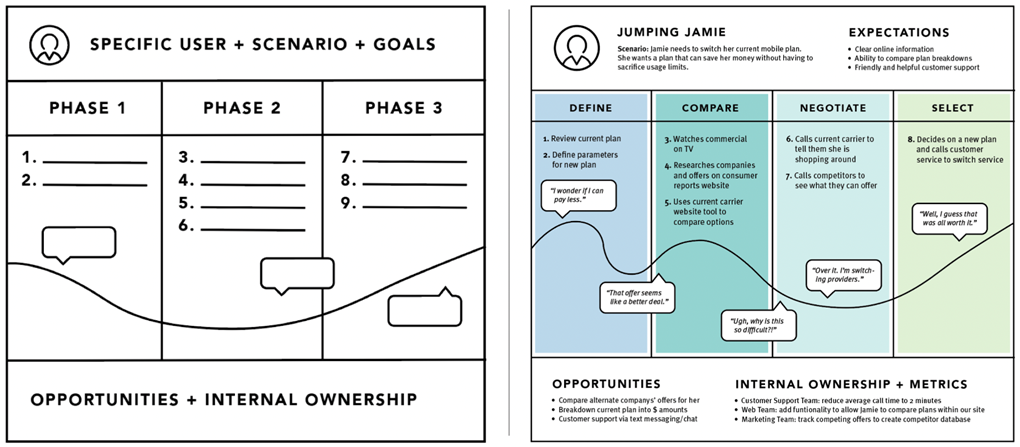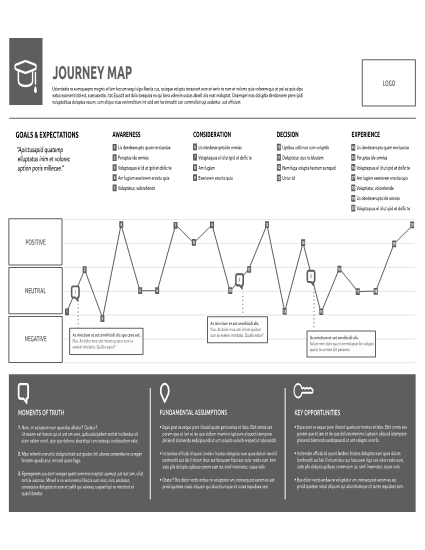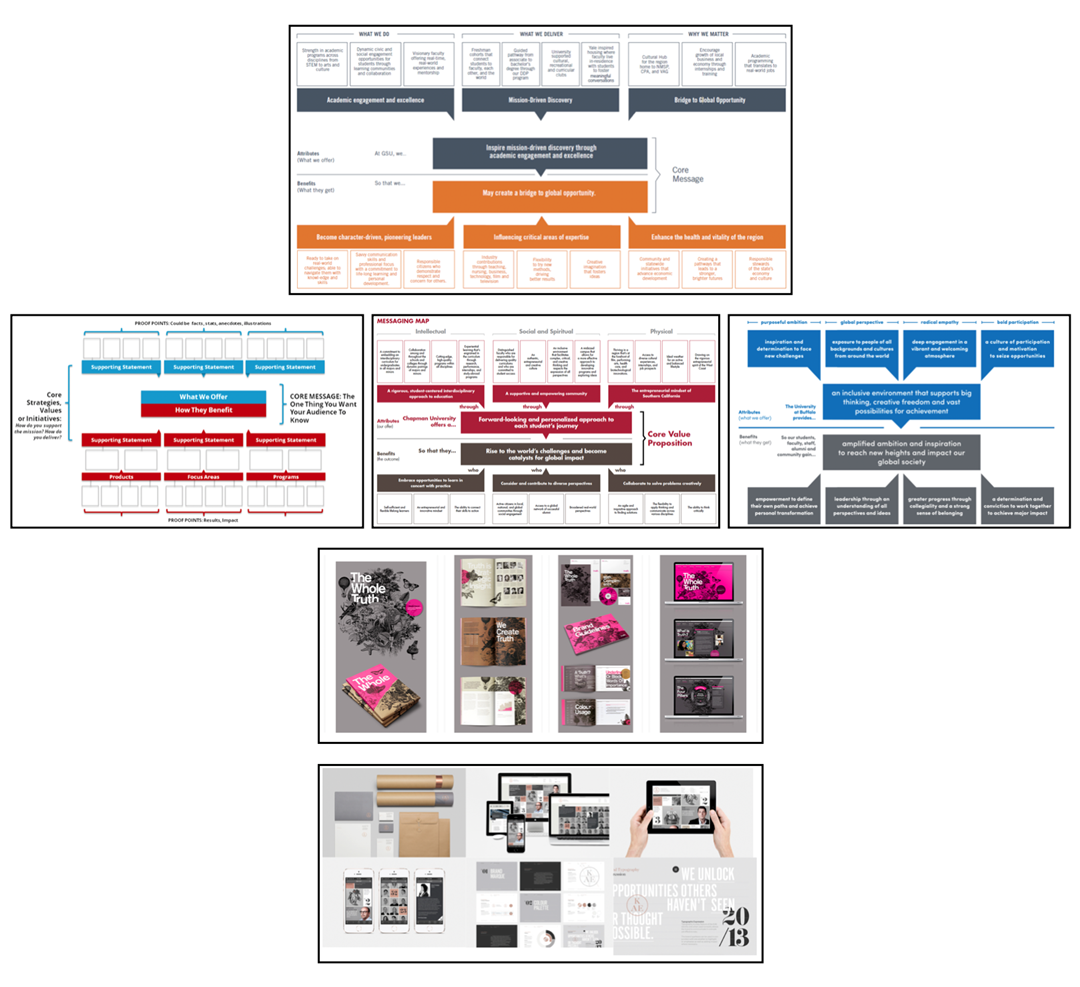Modern marketing is a tailored fit. For every user that grabs their phone or opens their laptop, their experience online is a personalized one. This is accomplished through technology that has evolved tremendously over the past five to ten years.
Today, compared with just a short while ago, the general public’s dependency on connected devices has forced many to develop expectations on what a “positive” user experience should be. Social media platforms have evolved their algorithms to guarantee that every person enjoys the content that’s best suited for them. Even digital marketing takes advantage of machine learning and responsive ad campaigns that can deliver custom ads to people depending on their online habits.
With all this technology and focus on the user experience, many colleges and universities are wondering how their communication can fit into such a crowded space.
The answer is PERSONALIZATION.
Matching Marketing to the Student Journey
Modern recruitment strategies provide a unique experience for every student. This is accomplished through awareness-based marketing practices that position the college or university as a helpful resource to the student.
In a successful recruitment campaign, the first step includes outlining the decision-making journey for all the key audiences targeted through the strategy.
Every student has a unique pathway to enrollment – for examples, see our articles on common pathways to enrollment for common higher ed audiences.
- The Recruitment Journey – High School Sophomore
- The Recruitment Journey – High School Senior
- The Recruitment Journey – Non-Traditional Student
- The Recruitment Journey – International Student
- The Recruitment Journey – Graduate Student
Journey Maps & Message Maps
When developing a recruitment strategy, it’s important to get as close to the “real world” as possible. Many times, this means research. In order to affect the decision-making process of a potential student, marketing needs to come in contact with the target audience at key moments in order to maximize the power of the message.
Two helpful resources to achieve this level of personalization include Journey Maps and Message Maps.
What is a Journey Map?
By definition, a journey map is a visualization of the process that a person goes through in order to accomplish a goal.
In its most basic form, journey mapping starts by compiling a series of user actions into a timeline. Next, the timeline is fleshed out with user thoughts and emotions in order to create a narrative. This narrative is condensed and polished, ultimately leading to a visualization.
Businesses have long used “Customer” Journey Maps in their strategies. These visualized maps highlight key opportunities to nurture and engage with potential customers.
In a similar way, colleges and universities have the ability to leverage these same tools to personalize the recruitment experience of their target audience.
Journey Map Example:
The below example shows how a typical customer journey map might be set up as it relates to a buyers selection process. Notice how the template example on the left breaks out different stages in the journey with points under each one. These moments can be trackable events with positive or negative emotional connections.

In the filled out example on the right, the points are then summarized at the bottom with “opportunities” and “metrics”. These are critical components of the target audience because the represent potential touchpoints or engagement opportunities between the brand and the customer.
While the above example illustrates a “customer” journey, it’s possible to take these same principles and apply them to potential students.

This example is a journey map template used by Epicosity that follows the decision-making process for a target audience. Each point on the line graph is a critical moment in the student’s recruitment journey – examples of these moments could be taking the ACT/SAT, visiting campus, receiving their first piece of college mail, filling out an application, or being accepted.
Once the journey map is created, they can then be passed out and used by everyone at the school. From the MCC department to Admissions, the outline decision-making process for the school’s target audience can provide valuable, personalized engagements between a college or university and a prospective student.
What is a Message Map?
A message map is a framework used to create compelling, relevant messages for various audience segments. It also serves as an organizational alignment tool to ensure message consistency across different content distribution channels.
Prospective students today consume content through many different channels. Just on social media alone, a high school senior could spend multiple hours each day on YouTube, TikTok, Snapchat, Instagram, and other platforms.
With this being the case, how can a school put out a cohesive marketing message that not only connect with the intended audience, but also fits within the content style of the platform?
Message maps are a great tool for these situations. Following the development of a journey map, a “message” map illustrates how a singular recruitment message can be incorporated and possible translated to fit within different situations.
Different Styles of Message Maps
There are many different ways a message map can be visualized. While some can have a flow chart style of appearance, others can include creative elements that might resemble more of a brand standard guide.
Here are some different examples of message maps:

You can see in the examples above that while each message map can look very different, they all illustrate the different ways in which a message can be interpreted. You see common words or phrases like “Core Message” or “Value” – the purpose is for the user to understand how value can be communicated to the audience.
Building a Message Map
When creating a message map for a college or university, consider the following steps in order to focus the map on the value of the school.
-
Identify the different audience segments
(Use the Journey Map here) -
What are the goals you want them to achieve
(For a recruitment campaign, the goal could be to fill out an application) -
Discuss the value proposition of the school
What sets your school apart from others?)
-
Align value to the audience segments
(Different audience groups might see value differently, organize the message map to connect value to the appropriate audience group) -
Define distribution channels
(Break down where the message will be disrupted – will the message go in an ad? On social media? In a print piece? Highlight how the message can be represented on different platforms)
Once the message map has been created, make sure to hand them out to everyone involved with the school’s communication. This will help ensure that even while providing a personalized recruitment experience for every student, the core value of the marketing message will remain front and center.
In Summary
Don’t fall into the sea of sameness. Create the opportunity for your school’s recruitment messaging to connect with potential students. By providing a positive user experience through personalization, based on emotional value, a recruitment campaign has a much greater chance of influencing the decision of potential students.
Journey maps and message maps are great tools to organize different audience segments and focus a marketing message on making a strong connection with students.
Related Articles:
- How to Improve Your Prospective Student Search Campaign
- Why Personalization Matters in Your College Admissions Strategy
- Success Equations for Higher Education Marketing | Introduction



